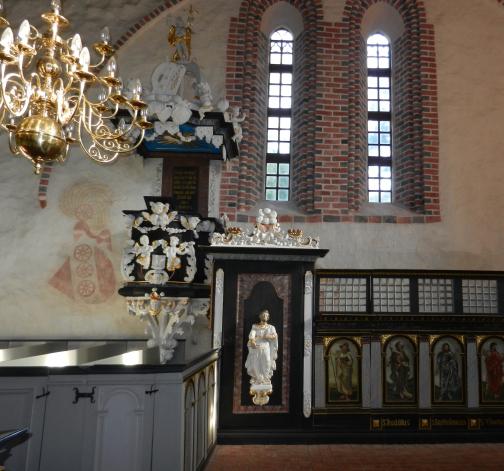The Church of Eixen and its Baroque Interior
The church of Eixen is made of boulders and has its origin in the 13th century. The eastern gable, which was constructed of bricks with circular arched and rhombic blinds, has also a bricked cross. The whole church was restored in the beginning of the 20th century. Due to this, neat mural paintings out of the 13th and 14th century were discovered.
The Retable
The winged retable, which has its origin in the 16th century, was converted from time to time and got its final design in the Baroque period. It received the auricular styled frame during the 17th century. The crucifixion group and figures of Moses and John the Baptist are located left and on the right hand side. The paintings of the predella with the Adoration of the Magi, the Last Supper and the Mount of Olives date probably to the same period. During the 18th century, the shrine was separated from the retable and found a new place on the southern wall. Later the retable was closed with panel paintings of the crucifixion group in the middle, the resurrection scenery on the left and the ascension to heaven on the right.
The Pulpit
The pulpit was created by the Stralsund sculptor Michael Müller. It is decorated with sculptural carvings, while a figure of the apostle Peter is attached to the portal. It is ornamented with acanthus-volutes and cherubs. In addition to this, a figure of John the Evangelist was added. On the edges of the pulpit ceiling are several angels, two of them carrying the Tablets of Law. The confessional box has its origin in the 17th century. On the southern wall, there is the loge of patronage, which separated the noble church patrons from the audience during the liturgy. This emphasized their higher social rank.



